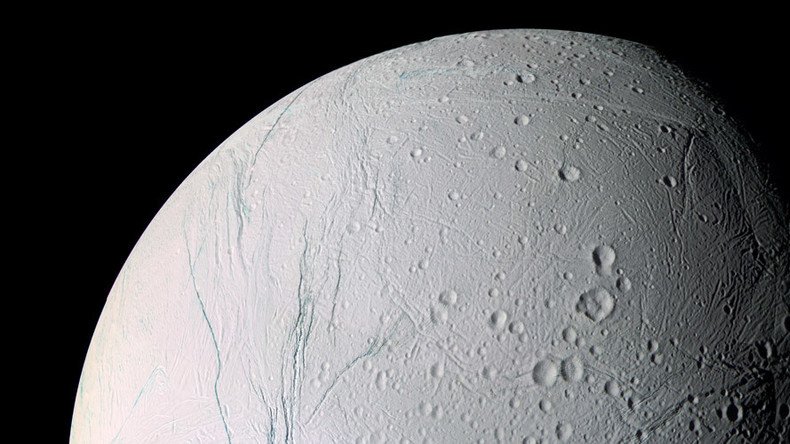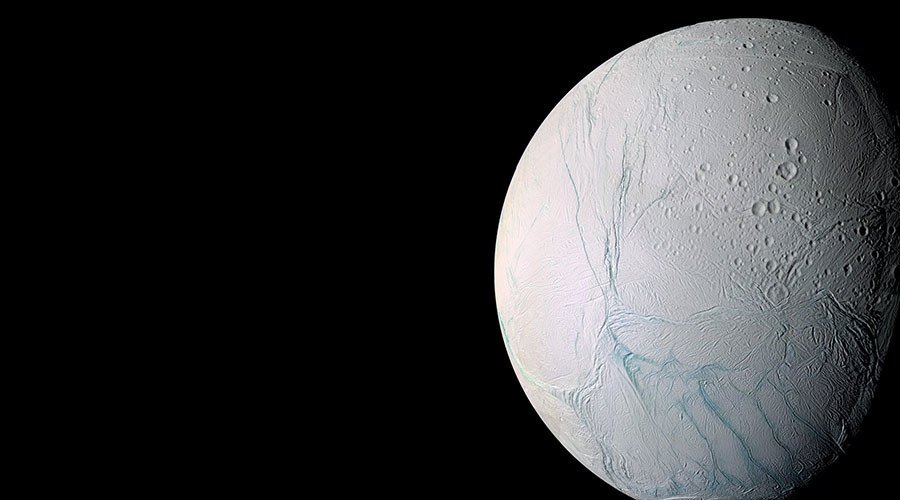NASA's Cassini detects heat of ocean on Saturn moon (PHOTO)

Data from NASA’s Cassini spacecraft revealed evidence of heat close to the surface of Saturn’s moon Enceladus. The latest discovery shows the moon as being warmer than expected with an ocean of water closer to the surface than previously believed.
The excessive heat is prominent in fractures in the moon’s south pole, known as “tiger stripes,” dormant venting fractures as seen in an image of the planet taken by Cassini. A study published in the journal Nature of microwave radiometry observations by Cassini of the stripes revealed a heating in temperature a few meters below the surface.
The results indicate an ocean of liquid water believed to be beneath Enceladus’ surface may be at a depth of a mere couple of miles, closer than previously believed.

"Finding temperatures near these three inactive fractures that are unexpectedly higher than those outside them adds to the intrigue of Enceladus," Cassini Project scientist, Linda Spilker, at NASA's Jet Propulsion Laboratory said in a statement. "What is the warm underground ocean really like and could life have evolved there? These questions remain to be answered by future missions to this ocean world."
NASA’s Cassini makes first plunge to orbit Saturn’s rings https://t.co/MMAGFxwVUcpic.twitter.com/BvoaiiI1ft
— RT (@RT_com) December 6, 2016
The latest research adds weight to a study last year that indicated a thickness of less than three miles in the ice shell at the south pole, compared to an average of 11 to 14 miles across the moon.
"These observations provide a unique insight into what is going on beneath the surface. They show that the first few metres below the surface of the area that we investigated, although at a glacial 50-60 K [Kelvin], are much warmer than we had expected: likely up to 20 K warmer in some places," Alice Le Gall, a member of the Cassini RADAR instrument team and a lead scientist on the new study, told Phys.org.
Cassini’s mission will end next month when it ventures closer to Saturn than ever before, plunging into its atmosphere and sending back as much information as possible until it loses signal.
READ MORE: NASA’s Cassini craft captures Saturn’s ‘wavemaker’ moon like never before (PHOTOS)
The craft has been studying Saturn and its natural satellites since 2004, producing never-before-seen images of the region.












